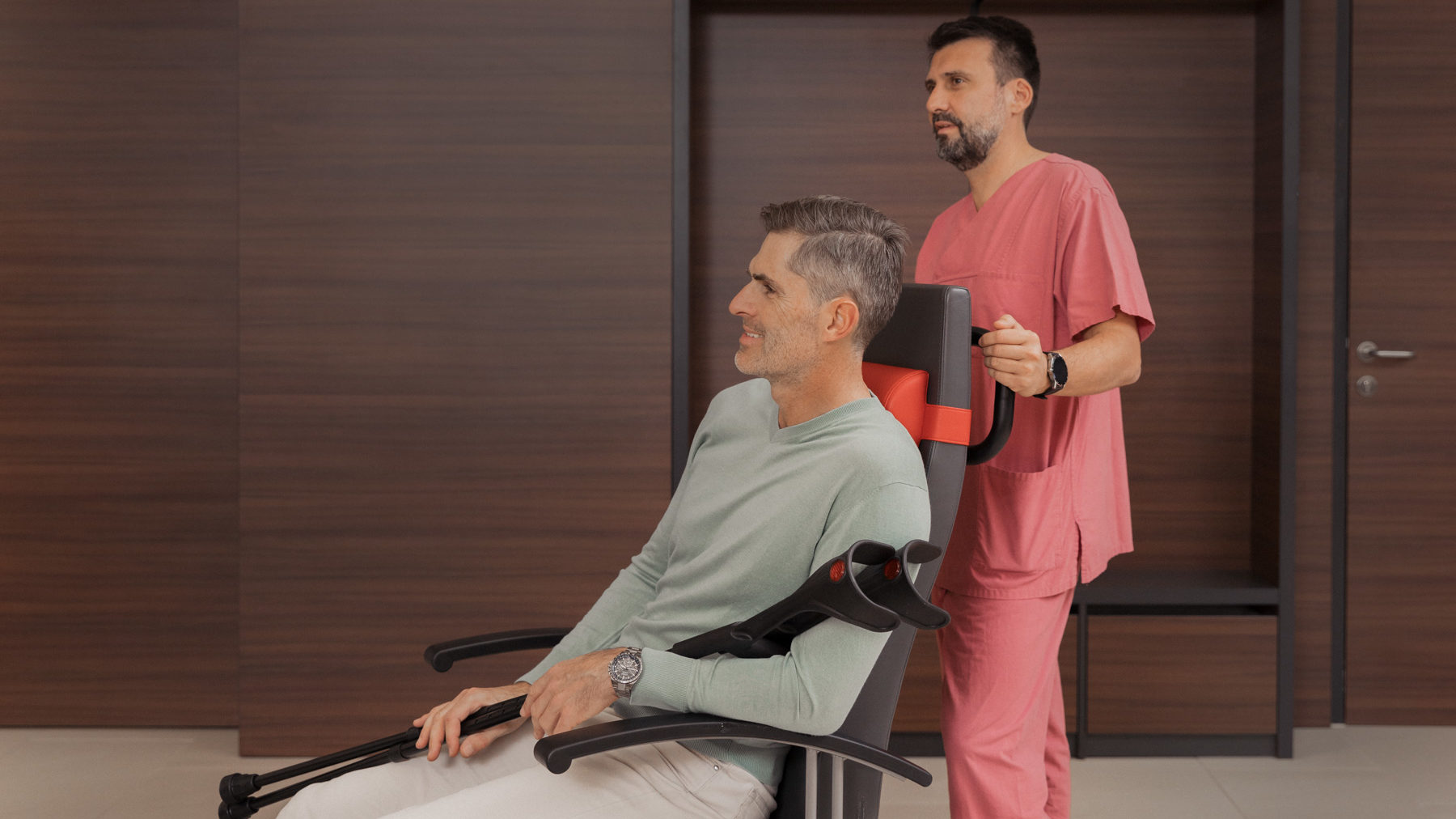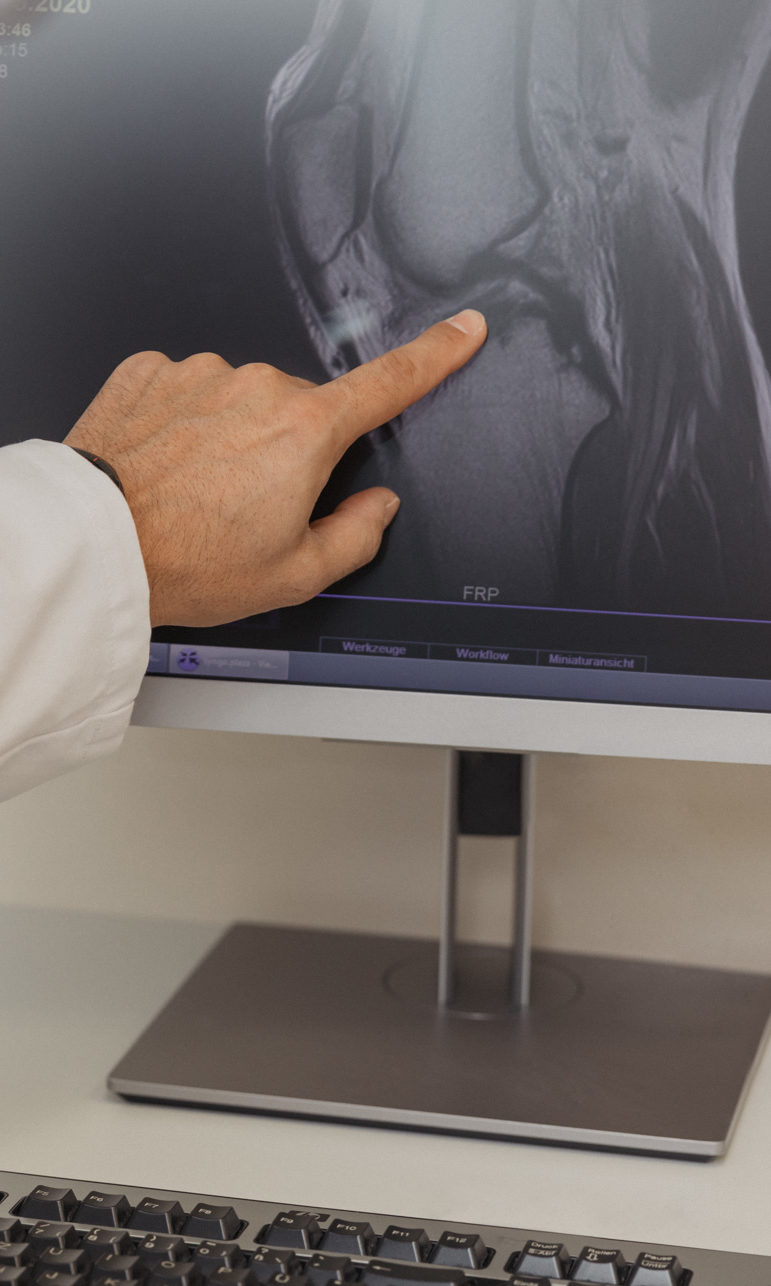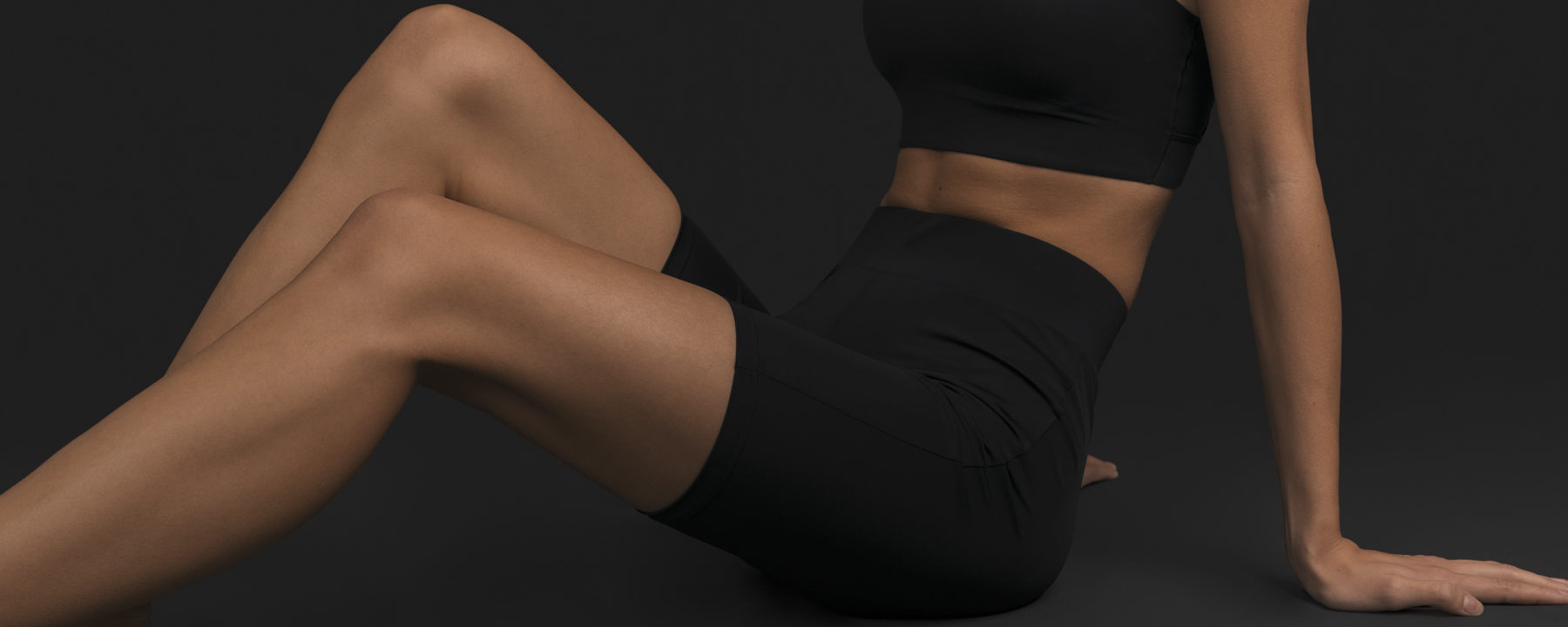Arthroscopy ("arthros" — joint and "scopy" — to look at) is the mirroring of a joint using camera optics – the arthroscope This type of arthroscopy is performed on the knee, shoulder and wrist, if necessary. Incisions of only a few millimetres long are made in the joint that needs to be examined. A small camera and other instruments can then be inserted into the incision for examination, repair and treatment.
Arthroscopy is mainly used to clarify joint complaints and to examine joint injuries. The most common areas of application (indications) for arthroscopy are:
- Injuries or changes in the joint caused by an accident (traumatic), e.g. cartilage damage, torn ligaments, meniscus injuries,…
- Degenerative changes in the joint (wear and tear), e.g. osteoarthritis
- Inflammatory changes


